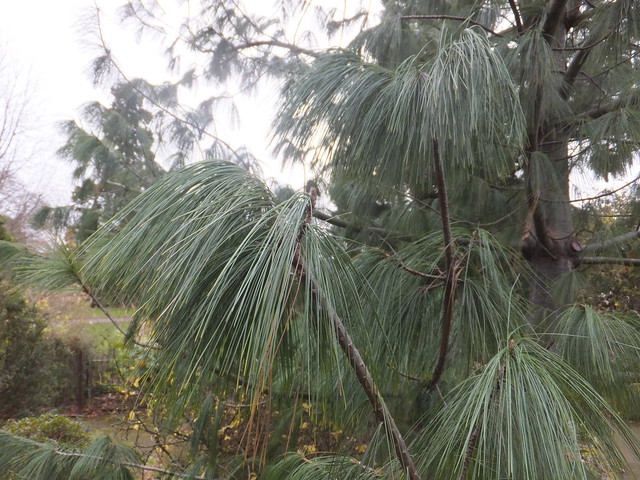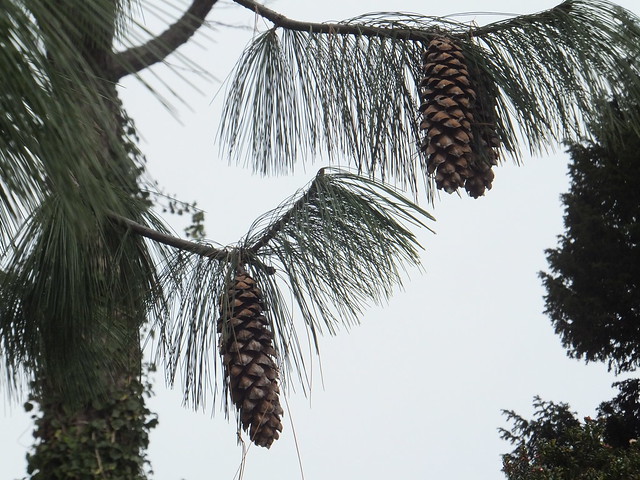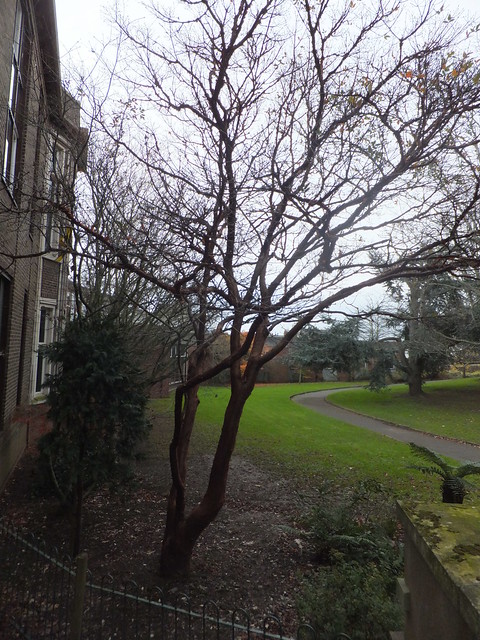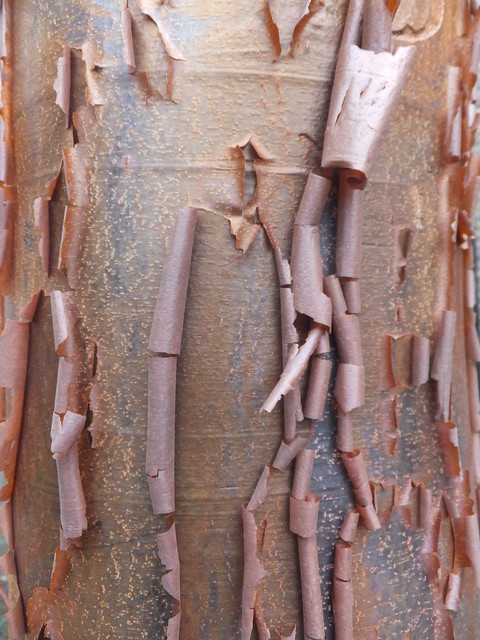Acer griseum is a maple native to central china which typically tops out at less than 30 feet (this one was all of that). It was introduced to western cultivation 110 years ago by Ernest "Chinese" Wilson for Veitch's nursery. Wilson is a legend among plant hunters - more than 2,000 species introduced to cultivation (including the Pocket Hankerchief tree discovered by Pere David and the Regal Lily) and namesake to 60 species. The Veitchs meanwhile introduced 1200 species to cultivation in Europe including 49 conifers and such famous species as the giant pitcher Nepenthes rajah while dispatching famous planthunters like the Lobbs and Wilson to what were then the furthest frontiers of exploration. The Veitchs also had one limb of their nursery in Exeter. So Acer griseum comes with serious historical pedigree plus it is rather ornamental. It's common name is paperbark maple.....because it does this:
Spectacular and I love seeing a big one of these in a park in Exeter, thinking of the Veitchs and Wilson out in the wilderness and then thinking of a plantsman 30 or so years ago pondering that history, thinking of the link to the town and a beautiful tree and then beginning to dig a hole.
At the other end of the park was something rather different, arguably more surprising and also with some history.

Edited highlights of Wallich's resume include:
- First Honorary Curator and First Superintendent of the Oriental Museum of the Asiatic Society.
- Superintendent of East India Company's Botanical Garden at Calcutta
- In 1822, at the behest of his friend Sir Stamford Raffles he travelled to Singapore to design the botanical garden.
- Prepared a catalogue of more than 20,000 specimens which is known informally as the "Wallich Catalog". Today, Wallich's personal collection is housed at the Kew Herbarium as a separate collection, known as the Wallich Collection. In addition to the specimens in the Wallich Collection, Wallich also distributed duplicates of his specimens to herbaria, of note are the duplicates he sent to Sir Joseph Banks, which are in the Kew general collection, outside of the Wallich Collection.
- Published two important books, Tentamen Floræ Nepalensis Illustratæ (vols I-II, 1824–26) and Plantæ Asiaticæ Rariores (vols I-III, 1830–32), and went on numerous expeditions.
- Regularly offered assistance to the many plant hunters who stopped in Calcutta on their way to the Himalaya.

It is a little tender in the more northern UK (ie mine died) but good in the south and has rather beautiful delciate drooping needles and long drooping cones. There is a monstrous specimen in RBG Kew and I'd thoroughly recommend it to those planning to plant a pine......especially those in public gardens with a sense of showmanship, history and a kindred spirit with plantsmen o the past.



No comments:
Post a Comment